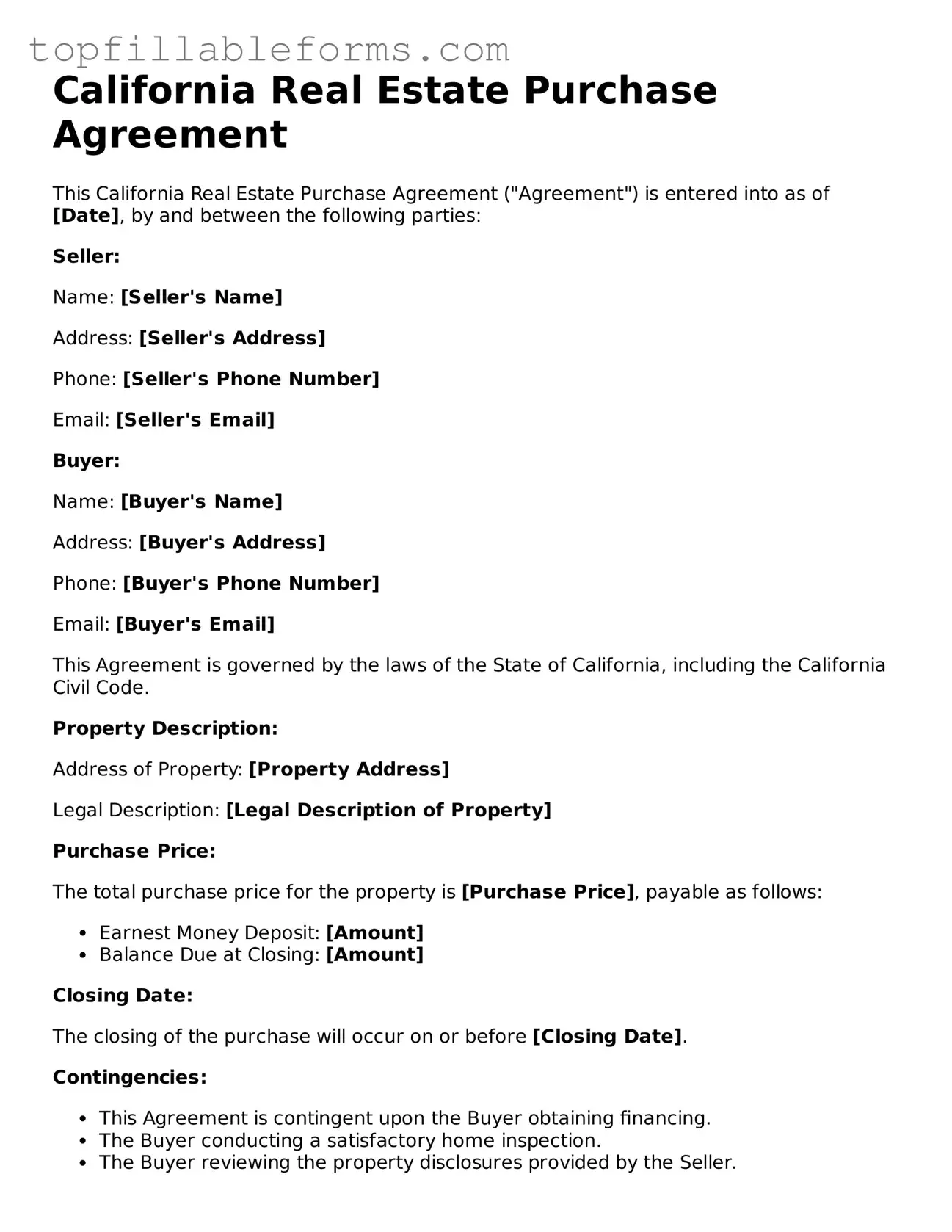California Real Estate Purchase Agreement
This California Real Estate Purchase Agreement ("Agreement") is entered into as of [Date], by and between the following parties:
Seller:
Name: [Seller's Name]
Address: [Seller's Address]
Phone: [Seller's Phone Number]
Email: [Seller's Email]
Buyer:
Name: [Buyer's Name]
Address: [Buyer's Address]
Phone: [Buyer's Phone Number]
Email: [Buyer's Email]
This Agreement is governed by the laws of the State of California, including the California Civil Code.
Property Description:
Address of Property: [Property Address]
Legal Description: [Legal Description of Property]
Purchase Price:
The total purchase price for the property is [Purchase Price], payable as follows:
- Earnest Money Deposit: [Amount]
- Balance Due at Closing: [Amount]
Closing Date:
The closing of the purchase will occur on or before [Closing Date].
Contingencies:
- This Agreement is contingent upon the Buyer obtaining financing.
- The Buyer conducting a satisfactory home inspection.
- The Buyer reviewing the property disclosures provided by the Seller.
Additional Terms:
[Any additional terms or conditions can be inserted here]
Signatures:
In witness whereof, the parties have executed this Agreement as of the date first above written.
______________________________
Seller's Signature
______________________________
Buyer's Signature
This document serves as a legally binding agreement between the parties upon execution.
